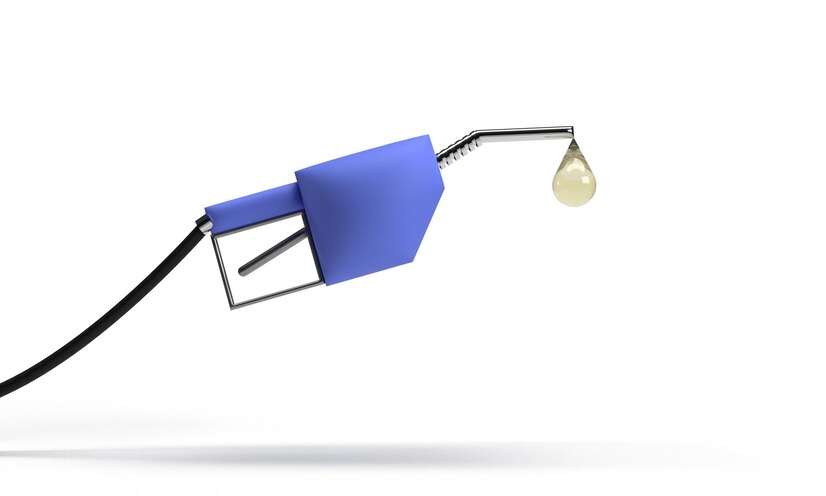Fuel Hose Essentials: Choosing, Maintaining, and Replacing Your Fuel Hose for Optimal Performance
When it comes to keeping your vehicle’s fuel system running smoothly, one of the most essential components to understand is the fuel hose. Whether you’re a DIY mechanic, a car enthusiast, or simply someone interested in how cars work, knowing the role, types, and maintenance needs of a fuel hose can make a huge difference in vehicle performance and longevity. This guide breaks down everything you need to know about fuel hoses, from choosing the right one to maintenance tips and when to replace it.
1. What is a Fuel Hose?
A fuel hose is a critical part of any vehicle’s fuel system. It’s a flexible tube designed to safely transport fuel from one part of the system to another, typically from the fuel tank to the engine. Made from special materials that withstand the corrosive nature of fuel, a good-quality fuel hose ensures a secure and consistent fuel flow, enabling smooth vehicle operation.
2. Why is the Fuel Hose Important?
The fuel hose might seem like a simple component, but it plays a vital role in maintaining fuel pressure and preventing leaks. A faulty fuel hose can lead to dangerous fuel leaks, which may cause engine performance issues, reduced fuel efficiency, and even safety hazards like fires. Since fuel is highly flammable, a well-maintained fuel hose is essential for safety.
3. Types of Fuel Hoses: Which One is Right for You?
Choosing the correct type of fuel hose for your vehicle is essential to ensure efficiency and safety. Here are the main types to consider:
- Rubber Fuel Hoses: Common in older vehicles, rubber fuel hoses are affordable and flexible. However, they may wear out faster and aren’t as resistant to modern ethanol-blended fuels.
- Nylon Fuel Hoses: Nylon fuel hoses are more common in newer vehicles, as they are lightweight and resistant to ethanol-based fuels. However, they can be sensitive to extreme temperatures.
- Stainless Steel Braided Fuel Hoses: These hoses have a stainless steel exterior, providing excellent strength, durability, and heat resistance. They are commonly used in high-performance or racing vehicles.
- PTFE (Polytetrafluoroethylene) Fuel Hoses: PTFE hoses are highly resistant to chemicals, making them suitable for modern ethanol-blended fuels. They have a smooth inner surface, reducing friction and wear, and are an excellent choice for long-term use.
When choosing a fuel hose, always check compatibility with your fuel type and vehicle requirements.
4. Installation Tips for a Fuel Hose
Proper installation of a fuel hose is essential for both performance and safety. Here’s a quick overview of steps to take during installation:
- Prepare the Area: Ensure the fuel system is depressurized before working. Disconnect the battery to prevent accidental sparks.
- Use the Right Tools: Have the correct clamps and fittings on hand. Avoid using outdated or mismatched hardware, as these can cause leaks or malfunctions.
- Follow the Bend Radius: Every fuel hose has a recommended bend radius, which should not be exceeded to prevent kinking and damage. Install the hose with smooth bends.
- Check for Leaks: After installation, start the engine and inspect the hose for any leaks. If any are found, tighten the fittings or replace faulty components immediately.
Installing a fuel hose correctly requires precision and care, so if you’re unsure, consider consulting a professional.
5. Maintaining Your Fuel Hose
Fuel hoses experience wear and tear due to the harsh environment in which they operate. Maintaining them can prevent leaks and unexpected breakdowns. Here are a few maintenance tips:
- Regular Inspections: Check your fuel hose periodically for signs of wear, cracking, or leaks. Rubber hoses can develop cracks over time, while nylon hoses may become brittle in extreme temperatures.
- Clean the Hose Area: Keep the area around your fuel hose clean. Dirt and debris can damage the hose or cause it to deteriorate faster.
- Avoid Overheating: Prolonged exposure to high temperatures can degrade most fuel hoses. Ensure your engine’s cooling system is functioning correctly to prevent excess heat.
- Replace Clamps: Clamps and fittings may also wear out, so make sure to inspect them during your routine checks.
Routine maintenance can help extend the life of your fuel hose and ensure safe and smooth vehicle operation.
6. Signs It’s Time to Replace Your Fuel Hose
Knowing when to replace your fuel hose is crucial. Here are some signs to look for:
- Visible Cracks or Frays: If you see cracks, frays, or other damage on the hose’s surface, it’s a sign the hose is compromised and should be replaced.
- Strong Fuel Smell: A strong fuel smell can indicate a fuel leak, which may result from a cracked or damaged fuel hose.
- Reduced Fuel Efficiency: If your fuel efficiency drops without an obvious cause, a fuel leak or a restricted fuel flow due to a damaged hose could be the reason.
- Poor Engine Performance: Hesitation, stalling, or poor acceleration may be symptoms of fuel delivery issues, often caused by a faulty hose.
Replacing a faulty fuel hose as soon as issues are detected can prevent larger problems and ensure your vehicle runs smoothly.
7. How to Replace a Fuel Hose: A Simple Guide
If you’re comfortable with basic vehicle maintenance, replacing a fuel hose can be a manageable DIY task. Here’s a step-by-step guide:
- Depressurize the Fuel System: This is a crucial step to avoid fuel spray when disconnecting the hose.
- Disconnect the Battery: For safety, disconnect the battery to eliminate any chance of sparks.
- Remove Old Hose: Using the correct tools, remove the hose clamps and fittings, and gently remove the old hose.
- Install the New Hose: Attach the new fuel hose, ensuring it fits snugly with the right clamps. Avoid overtightening to prevent damage.
- Check for Leaks: Start the engine and observe for any signs of leakage. Make adjustments if necessary.
This simple DIY can save you time and money, but if you’re unsure, don’t hesitate to reach out to a professional mechanic.
8. Choosing a Quality Fuel Hose: What to Look For
When selecting a fuel hose, quality should be a priority. Here’s what to consider:
- Material Compatibility: Ensure the hose is compatible with the type of fuel you’re using (e.g., gasoline, diesel, or ethanol-blended fuel).
- Temperature Resistance: Check the temperature rating to ensure the hose can withstand the heat generated by your vehicle.
- Pressure Rating: The fuel hose should have a pressure rating that matches your vehicle’s fuel system requirements.
- Brand Reputation: While there’s no need to go for high-end brands, select from reliable sources with proven durability and quality.
A well-made fuel hose will not only perform better but will also last longer, making it a worthwhile investment.
9. How to Prolong the Life of Your Fuel Hose
Prolonging the lifespan of your fuel hose is achievable with the right care and practices:
- Avoid Excessive Heat Exposure: High temperatures can degrade hoses faster, so keep the fuel hose away from heat sources as much as possible.
- Don’t Stretch the Hose: Avoid stretching the hose during installation, as this can cause stress and lead to early wear.
- Inspect After Repairs: After any repairs in the fuel system, inspect the fuel hose to ensure it’s in good shape and was not accidentally damaged.
Taking these precautions can help your fuel hose last longer and reduce the need for frequent replacements.
10. Conclusion: The Role of the Fuel Hose in Vehicle Health
In summary, a fuel hose is a simple yet essential part of your vehicle’s fuel system. By selecting the right type, ensuring proper installation, performing routine maintenance, and knowing the signs of wear, you can ensure your fuel hose—and your entire vehicle—performs at its best. The fuel hose is vital to the safe, efficient, and smooth operation of any vehicle, making it a critical component to keep an eye on.
Whether you’re a seasoned mechanic or a casual car enthusiast, understanding your fuel hose and maintaining it properly is a step toward better vehicle care. Safe travels and happy driving!














Post Comment